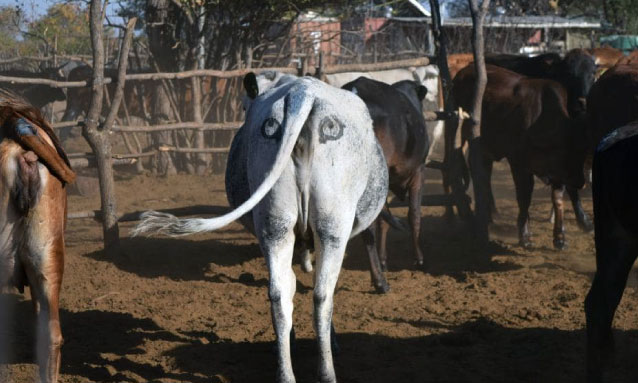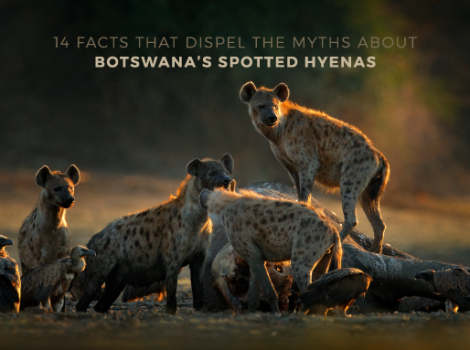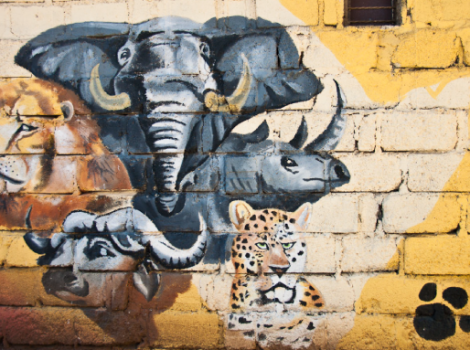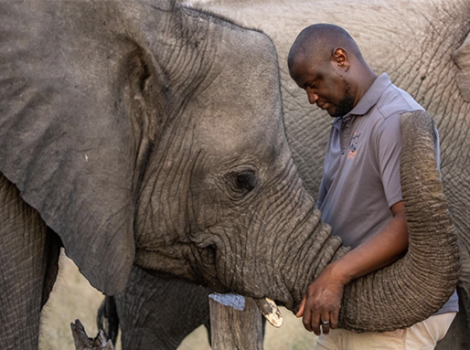
The four-year study in Botswana found cattle with eye marks painted on their behinds were less likely to be killed by predators
On the fringes of the wild Okavango Delta World Heritage Site in northern Botswana, keeping cattle is not easy. The region’s farmers often encounter scenes of bloody slaughter in their pastures, knowing it was likely wrought by a marauding lion or leopard. In retaliation, the farmers may kill the predators with guns or poison, conspiring with habitat loss and other threats to drive their decline.
Now, a new study, published recently in the journal Communications Biology, confirms prior research indicating that painting eyes on the backsides of cattle may help deter predators, potentially saving the lives of cows and lions alike, reports Katie Camero for the Miami Herald.
The basic concept is simple enough: Lions and leopards are what ecologists call ambush predators, meaning they prefer to sneak up on unwitting prey. The element of surprise is so valuable that if these predators think they’ve been spotted, they will often abandon their hunt entirely, lead researcher Neil Jordan, an ecologist with the University of New South Wales and Taronga Western Plains Zoo, says in a statement.
“We tested whether we could hack into this response to reduce livestock losses, potentially protecting lions and livelihoods at the same time,” Jordan explains.
After a small-scale initial study showed the “eye-cow technique” might work, Jordan and his colleagues embarked on a larger four-year effort, reports Jennifer Oullette for Ars Technica.
In Botswana, the researchers painted hundreds of cows with eyespots, others with two cross marks and left a third group au naturel. A total of 2,061 cattle from 14 herds participated in the study.
Although all the cattle were exposed to similarly risky foraging grounds during the day—at night they were kept in predator-proof enclosures—the group which appeared to have an extra pair of eyes was most likely to survive, the researchers write in the Conversation. Of the 683 cows with eyes painted on their bums, zero were killed by predators during the four-year study. 15 of the 835 unpainted and four of the cross-painted cattle met bloody ends. Lions were by far the deadliest predators in the study, killing 18 cows.
The findings highlighted that the eye-marked cows were always alongside cows with more traditional looking backsides. Jordan called these cows “proverbial sacrificial lambs,” noting that future studies will be needed to probe whether an entire herd of four-eyed cows would still go unscathed. The other question is whether the watchful bovine butts might lose their efficacy over time. But Jordan says any protection offered by something as simple and low cost as painted eye marks is worth exploring when it comes to reducing conflicts between predators and people’s livestock.
“Protecting livestock from wild carnivores–and carnivores themselves–is an important and complex issue that likely requires the application of a suite of tools, including practical and social interventions,” Jordan says in the statement.
“The eye-cow technique is one of a number of tools that can prevent carnivore-livestock conflict–no single tool is likely to be a silver bullet.”
The researchers are hopeful that their work might one day help lions and people live in greater harmony.



